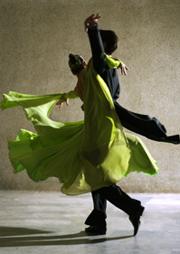 It is the dance that oozes sexuality. It is a melodic art that allows the lady to kick her six-inch stiletto near the “baby makers” of her male partner. This sensual expression is found today in dance halls throughout the world. With the ebb and flow of time, this dance, known as tango, has greatly evolved and molded into new forms of expression for the 21st Century.
It is the dance that oozes sexuality. It is a melodic art that allows the lady to kick her six-inch stiletto near the “baby makers” of her male partner. This sensual expression is found today in dance halls throughout the world. With the ebb and flow of time, this dance, known as tango, has greatly evolved and molded into new forms of expression for the 21st Century.
Developed in the busy city of Buenos Aires, Argentina, the Tango originated from African dance styles and melting pot ideals. It is considered by the Portenos, i.e, the Buenos Aires locals, to be the “music of the immigrants,” a robust art form born from and for the poor. But it is not only this anymore. The music and dance has taken on a life of its own. The traditional dance has splintered off into two different offspring: Tango Nuevo, or new Tango, and Neo Tango, literally meaning the most recent Tango.
Tango Nuevo, also referred to as Electro Tango or Tango Fusion, is a dance that came to be in 2001 and still embodies the loin stirring sensuality of its forefathers. The dancers, melting into one, cling, twirl and stare longingly into each other’s eyes. The difference is in the music.
The entangled melodies and complex rhythms of traditional tango are interlaced with samples, beats and sounds of the electronic age, jazz and classical music. The DJ scene has been an important component in the Tango Nuevo revolution. Songs by such artists as Grace Kelly and Sarah Vaughans have been interlaced with the normal Tango grooves.
The Old School dancers feel that Tango Nuevo is a deviation from the true style and tradition of contemporary Tango. Yet, many feel that it is a breath of fresh air to the century old music style. As the new style is becoming more mainstream, the sound is flowing in the direction of being the common Tango groove of the future.
Neo Tango, another modern manifestation of traditional tango, is known as the black sheep of the Tango family; it is danced to pop, new age or eastern sounds as well as Salsa and Swing. The dancers wear baggy pants, which resembles the break dancer look of the 80s. With this dance, the common sensual moves are absent as is the most conventional tango move, the close embrace.
The dance incorporates shorter steps, broken embraces and twirls without touching or only touching with one hand. It often looks as if the dancers are martial art fighters with kicks, waving movements of bodies and hops. Neo Tango originated from the Tango Nuevo movement but is not considered to be an authentic form of tango. The Neo Tango dancer is often not versed in the Argentine version of the Tango and chooses to remain monogamous to this new form of dance. Although somewhat similar to the Brazilian/African dance Capoeira, it does not have any actual bodily contact, head butts or competitive nature.
Yes, the three varying types of tango are important pieces in music culture. Whether enjoying the traditional style or the more contemporary forms of the dance, it is always a joy to watch the art in action and with such diversity in the songs the varying musical ears will be happy, too.
Additional Resources:
virtuar.com/tango/articles/2005/nuevo_neo.htm
